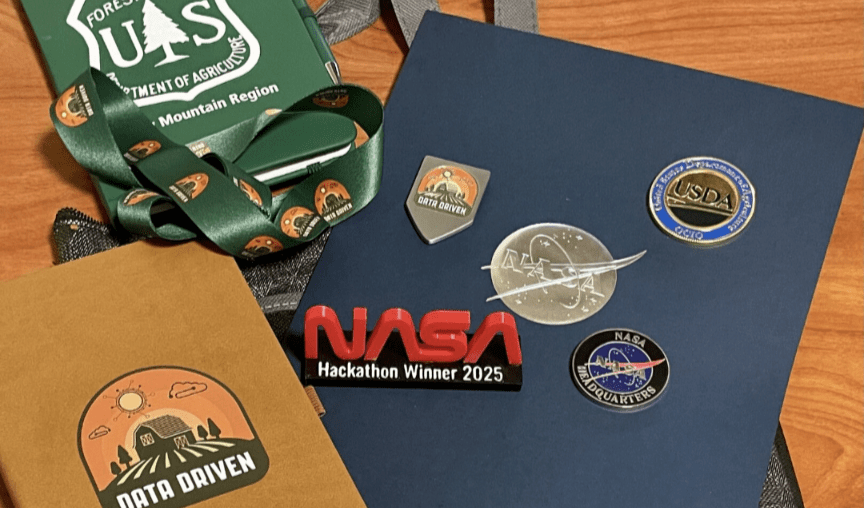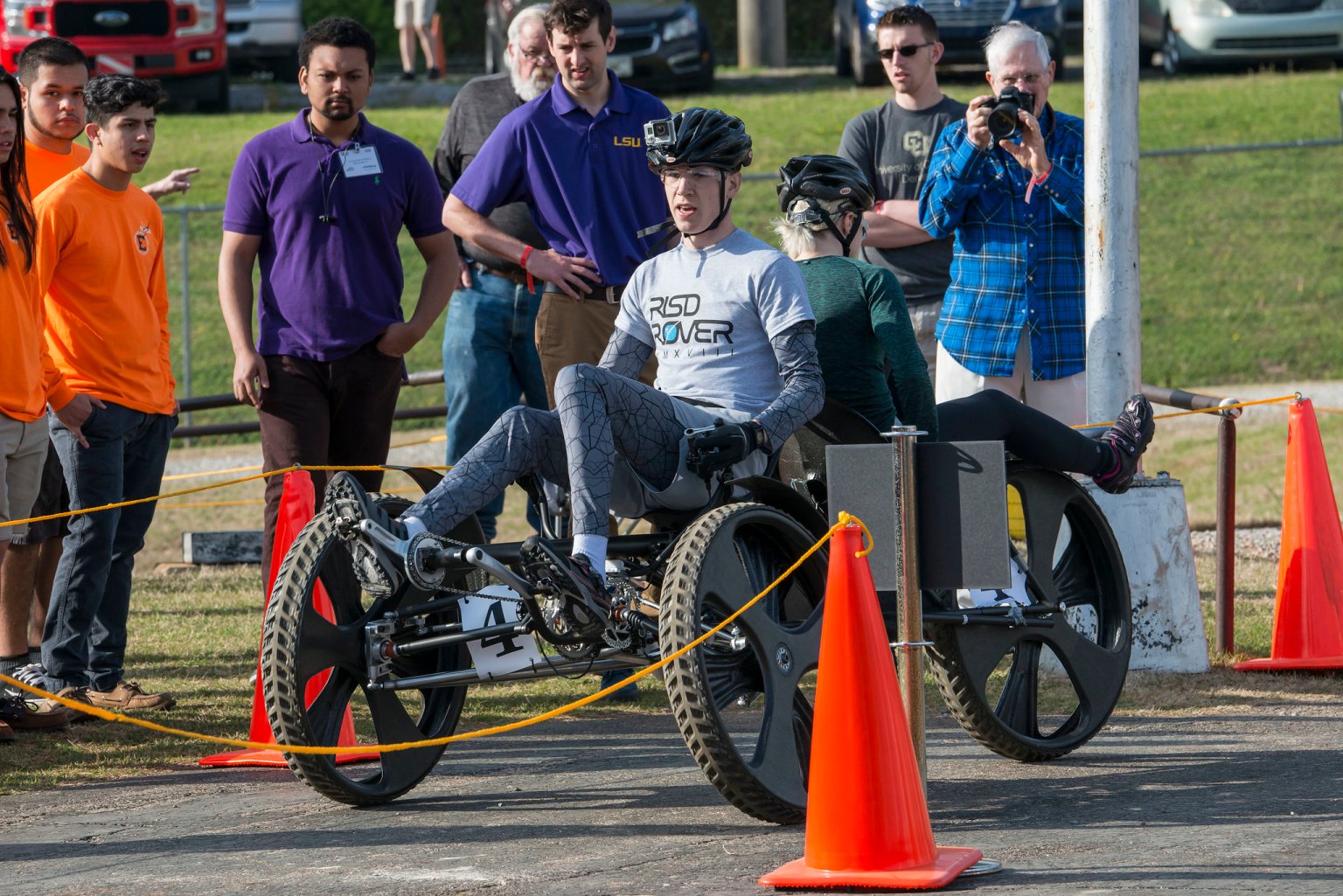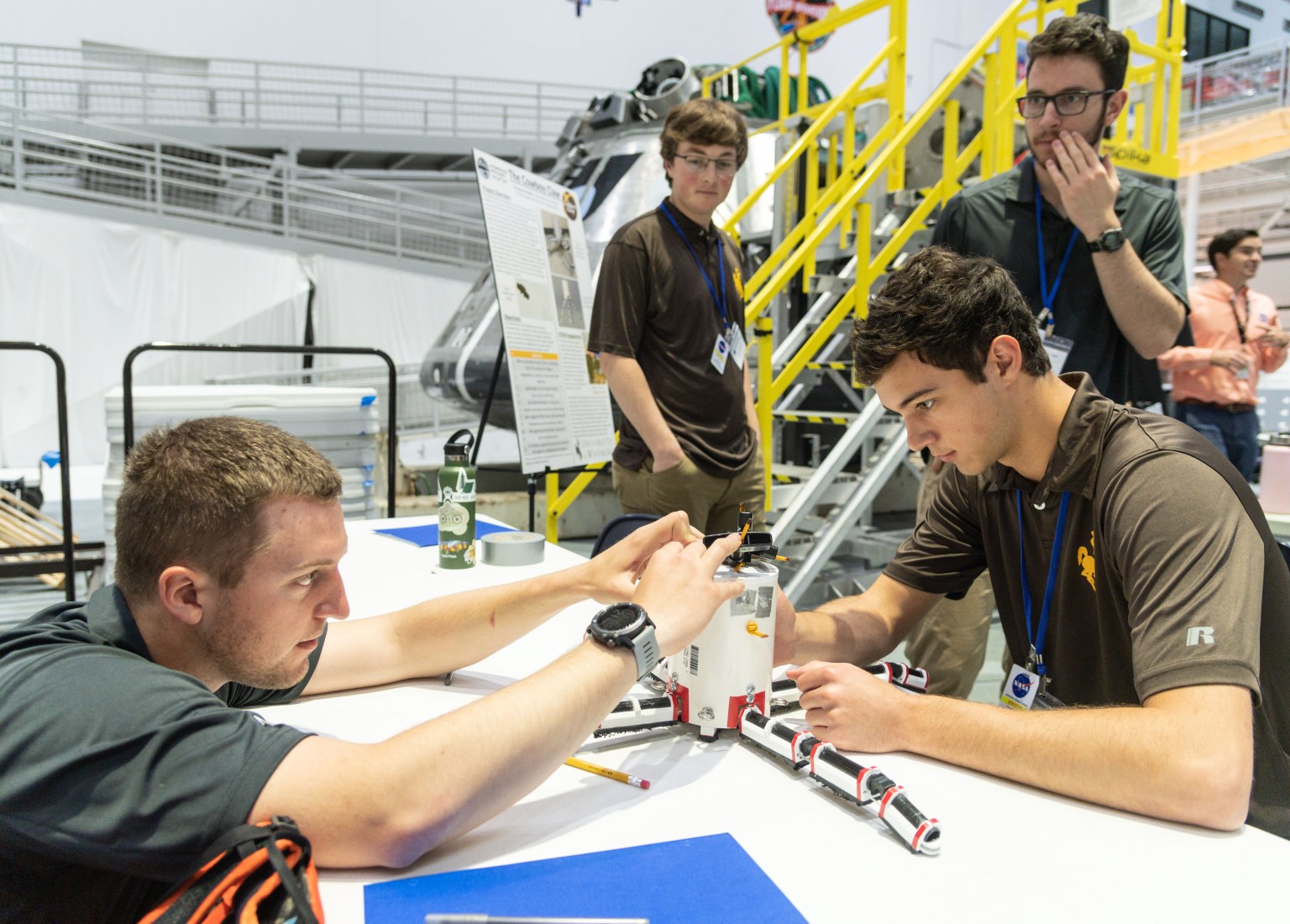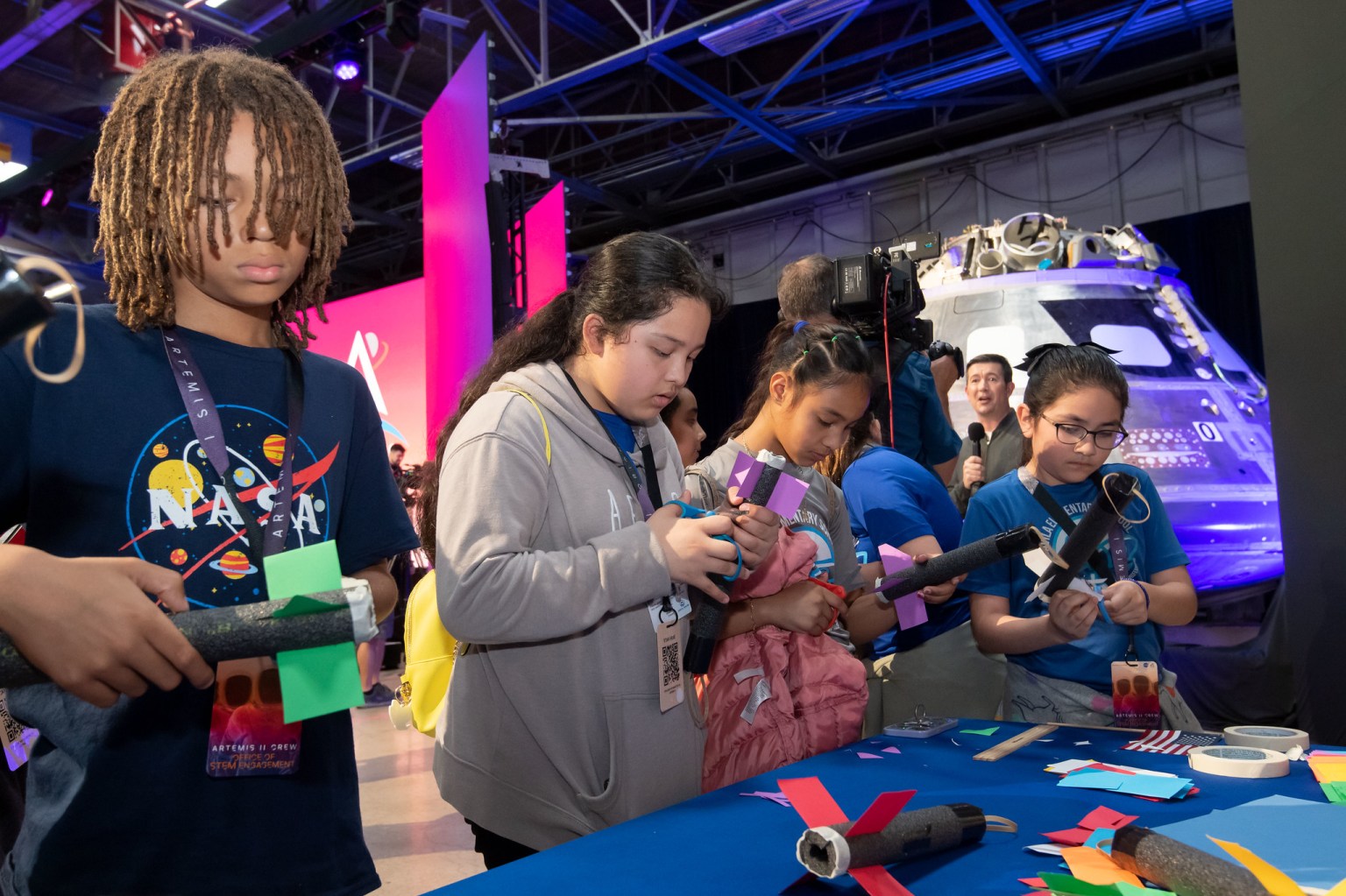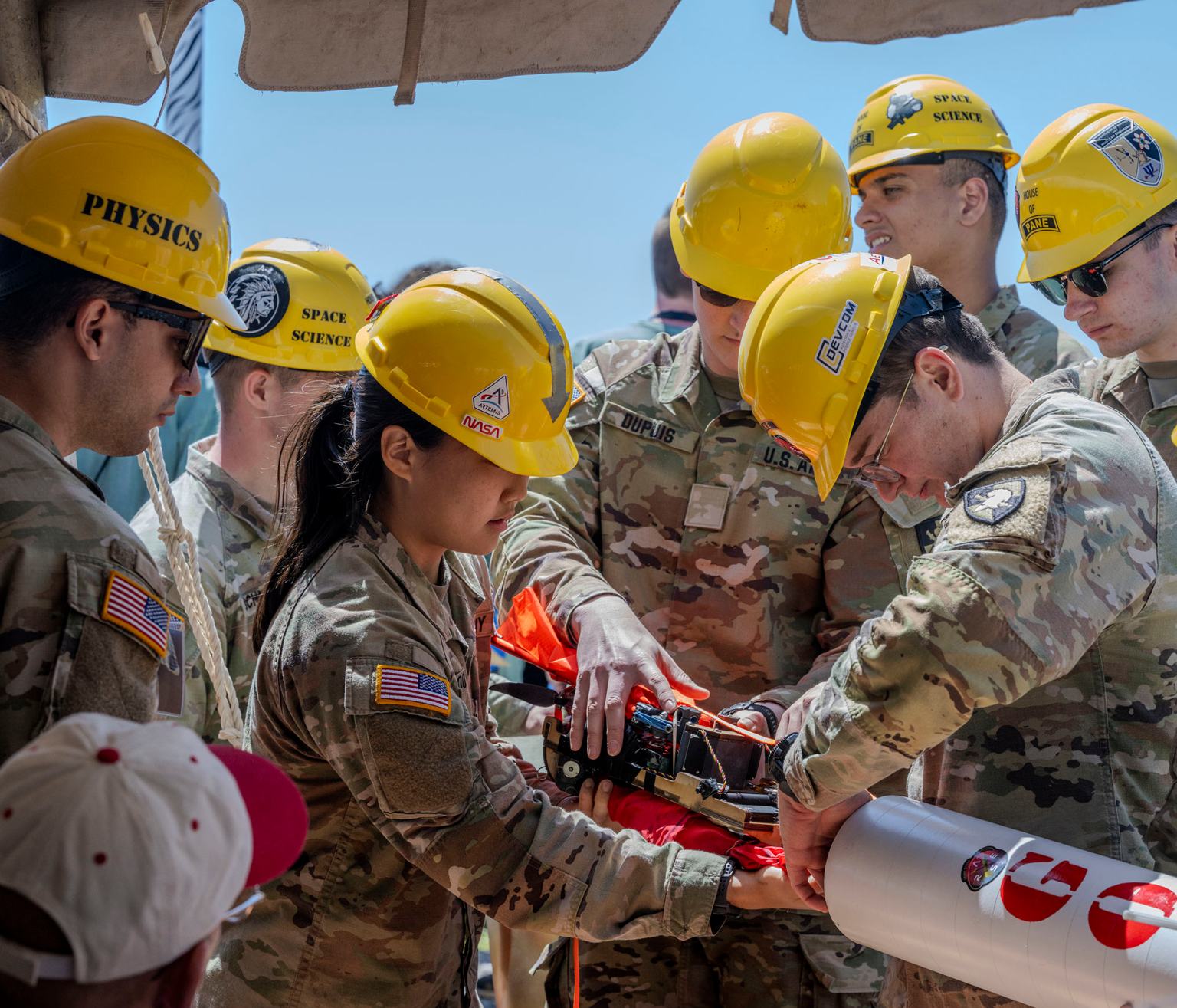Student Coders Bring Novel Approaches to NASA Challenge
- NASA partnered with the US Department of Agriculture, Amazon Web Services, and Colorado State University to challenge college students to design AI-driven solutions for real-world problems.
- The challenge, called the Spring 2025 CSU Hackathon, asked teams of four students to develop autonomous mapping systems or algorithms that could guide a rover across rough terrain in emergency scenarios within 24 hours.
- The students’ work delivered tangible value to both NASA and the USDA Forest Service, demonstrating novel approaches to real operational challenges like wildfire response, terrain mapping, and emergency search and rescue.
- The hackathon provided opportunities for students to learn skills, network, and try something new, with 98% of post-event student survey respondents indicating a strong enthusiasm to share the event with other students.
- The success of the hackathon demonstrated what’s possible when creativity, passion, and partnership align, offering NASA a clear proof of concept for advancing AI adoption by connecting real-world challenges with emerging talent.
On March 28, 80 college students filed into Colorado State University’s (CSU) Nancy Richardson Design Center to receive pizza and a challenge: design an intelligent system capable of traversing rugged terrain to provide aid in emergency scenarios.
They had 24 hours to complete this mission.
Co-led by CSU, the United States Department of Agriculture (USDA) Forest Service, and NASA, the Spring 2025 CSU Hackathon forged a symbiotic relationship between federal agencies looking for novel AI solutions and innovative students hungry for a challenge.
“One of the goals of the Career Center is to create opportunities for relationship building,” said Mika Dalton, CSU’s career center employer relations coordinator. “Events like these really help students connect with industry and identify different career pathways to expand their understanding of where their education could lead them after graduation.”
In teams of four, students chose between two technical prompts grounded in real-world data. The USDA Forest Service posed the “Uncharted Challenge,” asking teams to develop an autonomous mapping system for uncharted National Forest System roads using high-resolution satellite imagery. In the “Rover Challenge” posed by NASA, students were asked to design an algorithm that could autonomously guide a rover across rough terrain to reach an injured firefighter.
Over the next 24 hours, students analyzed lidar and satellite imagery, built algorithms, and tested their models in SageMaker, a development environment hosted by Amazon Web Services (AWS). As they collaborated on their solutions, students also helped NASA evaluate SageMaker’s potential for agency adoption.
The students’ work delivered tangible value to both agencies, demonstrating novel approaches to real operational challenges like wildfire response, terrain mapping, and emergency search and rescue.
The students did an incredible job showing how AI can solve tough problems, from navigating the Moon to handling emergencies, all in line with NASA’s mission.

Martin Garcia
NASA’s artificial intelligence and innovation lead
For the USDA, accurate and efficient trail maps can support fire crews and forest managers; for NASA, more advanced terrain navigation systems enhance efforts in AI-assisted robotics, including lunar rovers tasked with reaching astronauts or delivering supplies in critical missions. “The students’ consideration for energy efficient lunar vehicle traversal would benefit the agency’s mission to implement extended scientific and engineering missions on the lunar surface,” said NASA data scientist Andrew Wilder.
Winning teams received recognition for Best Overall Project, Ingenuity, Simplicity, and Tenacity. Prizes included letters of recommendation from agency leaders and future opportunities to present their work to NASA and Forest Service staff.
“I had a great team, and we were able to work through several setbacks with clear communication. I also got to meet professionals from NASA, USDA, Forest Service, and AWS. These were great opportunities and so I learned a lot of networking and interviewing from them,” said one participating CSU student.
Ultimately, 98% of post-event student survey respondents indicated a strong enthusiasm to share this event with other students. Along with the endorsement, students shared that it was a great way to learn skills, network, and try something new. Many respondents, while strongly recommending the event, emphasized that the event was very challenging, intense, and a place to apply classroom knowledge.
The hackathon demonstrated what’s possible when creativity, passion, and partnership align. For NASA’s Chief AI Officer (CAIO), it offered a clear proof of concept: a low-cost, high-impact model for advancing AI adoption by connecting real-world challenges with emerging talent. Beyond the technical outputs, NASA gained testable solutions, valuable insights into rapid prototyping, and deeper relationships with federal, academic, and industry partners. The hackathon also provided a repeatable framework for future events with other institutions.
By bringing together mission teams, partners, and student innovators—and fueling them with pizza and friendly competition—NASA is accelerating innovation in bold, creative ways.

